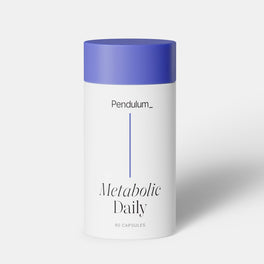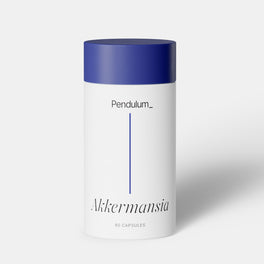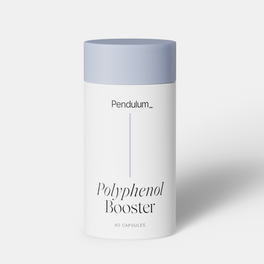Looks like your
cart is empty

Metabolic Daily
Improve metabolism

Akkermansia
Improves gut health

Polyphenol Booster
Increase antioxidants to protect cells
Stay in touch about special discounts, nutrition tips and additional education.
Looks like your
cart is empty

Improve metabolism

Improves gut health

Increase antioxidants to protect cells
In this article we’ll answer common questions that we receive about inulin and prebiotics, such as:
Inulin belongs to a group of non-digestible, plant-based carbohydrates called fructans. They can be found in about 36,000 species of plants, but the hearty chicory root is considered the richest source.
All parts of the chicory plant, a member of the dandelion family, have been shown to have positive health benefits due to the high levels of polyphenols contained in the plant.1
Prebiotics are a category of nutritional compounds grouped together by their ability to promote the growth of specific beneficial gut bacteria (probiotics).2
Inulin is indeed a prebiotic. It is a type of carbohydrate that’s not digested by your body, but instead used as “food” by your gut’s good bacteria!3 Those industrious gut bacteria munch up the inulin and convert it and other prebiotics into various postbiotics including short-chain fatty acids, which nourish colon cells and provide many health benefits.4
Researchers found that increased doses of chicory inulin in foods were found to stimulate the growth of bifidobacteria (a beneficial bacteria) and help maintain a healthy gut microbiome.
In addition, the health benefits of chicory inulin on the composition and activity of the gut microbiome have been addressed in several studies5 and shown:
These benefits can be seen for higher doses of inulin compared to those found in Pendulum Glucose Control and Pendulum Akkermansia.
As stated above, prebiotics like chicory inulin promote the growth of specific beneficial gut bacteria by acting as their food source. By including inulin in our probiotic formulations, Pendulum scientists are ensuring that the strains have the food they need to thrive and colonize in your gut.
The typical American doesn’t get enough daily fiber, so all the more reason to include inulin. It’s like packing a lunch for the probiotic strains.
Additionally, in-vitro studies performed by Pendulum show that chicory inulin is actually a highly preferred prebiotic source for the novel strains found in Pendulum Glucose Control and Pendulum Akkermansia.
John Eid, PhD, Chief Scientific Officer at Pendulum, says the team observed in the laboratory that chicory inulin enables more efficient growth.
“We wanted to make sure that our capsules contain all of the ingredients necessary for the formulation to produce short-chain fatty acids independent of the condition of the host microbiome or the amount of fiber in your diet.” says Dr. Eid.
Pendulum’s team of Registered Dietitians have more information on a proper high-fiber gut-microbiome diet that will promote microbial diversity and a thriving gut!
Some plants contain only small amounts of inulin, but others are more abundant. Here are a few examples of the amount of inulin in a 3.5oz serving of the following foods:8
Inulin can also be found in other your favorite fruits, grains, and vegetables like:
Even though inulin is found in many foods and is known to have health benefits, the average American diet includes just 1-4 grams of inulin per day.
Inulin is plant-based and safe to consume.
Pendulum’s Director of Nutrition Programs, Kristin Neusel, MS, RDN, LD, CDCES, NASM-CPT, advises increasing your fluid intake as you increase your fiber intake.
"Soluble fiber attracts water in the gut, which then forms a gel. Without adequate fluid, fiber won't be able to offer all of the wonderful benefits it has the potential to offer. If you are already getting adequate fluid for your body, there is no need to increase fluid," explains Ms. Neusel.
For some, higher doses might cause uncomfortable side effects like diarrhea, gas and bloating.10 If you’re starting a probiotic, prebiotic or other regimen that includes inulin, these side effects will typically subside as your body acclimates.
If you’re concerned, before you start taking an inulin supplement talk to your healthcare provider to avoid any potential problems.
If you’re pregnant, you should talk to your doctor before taking any supplemental product.11